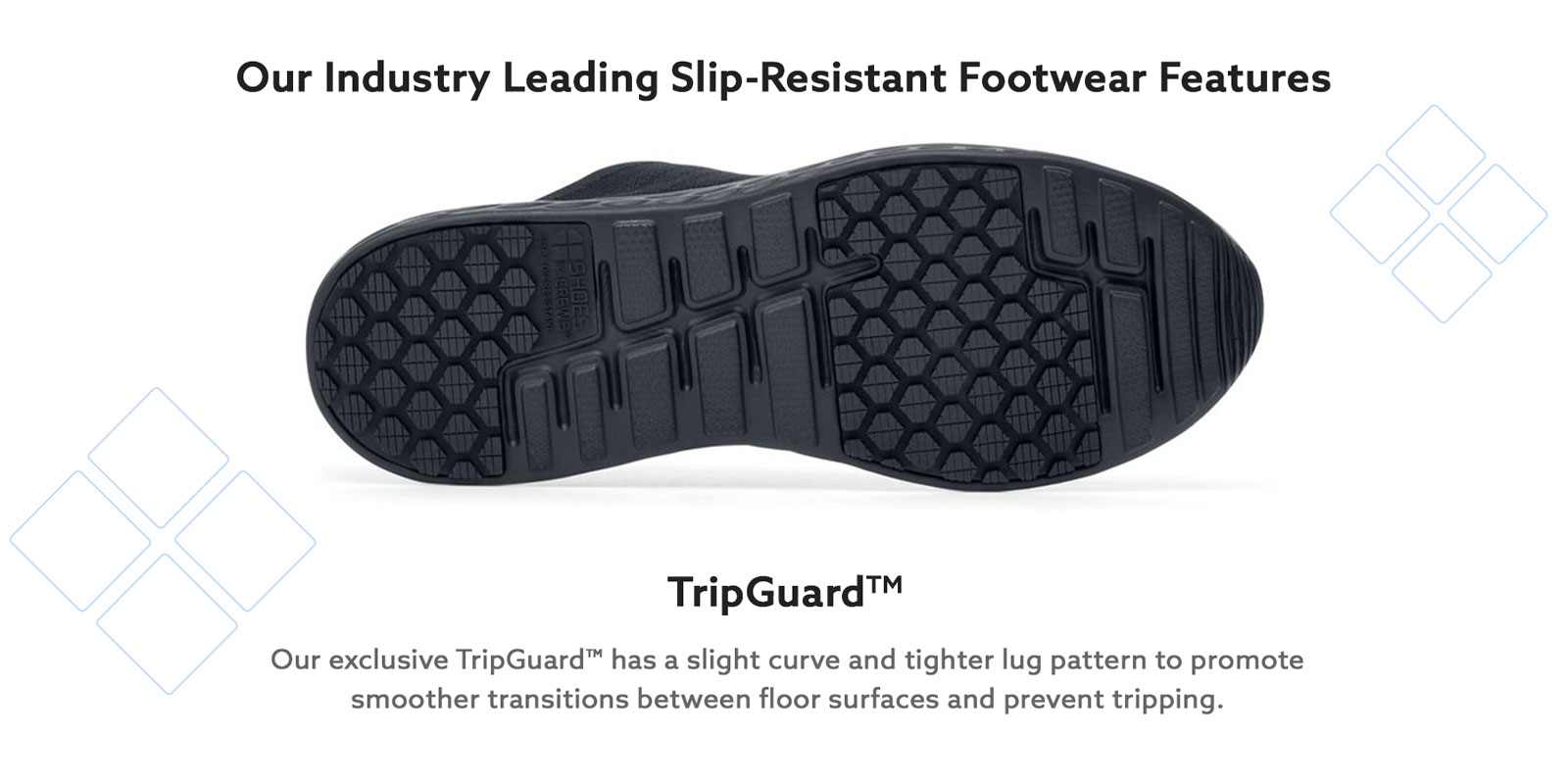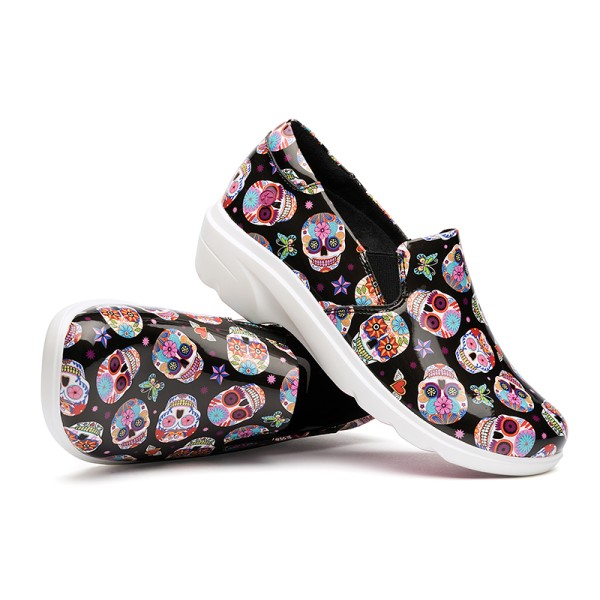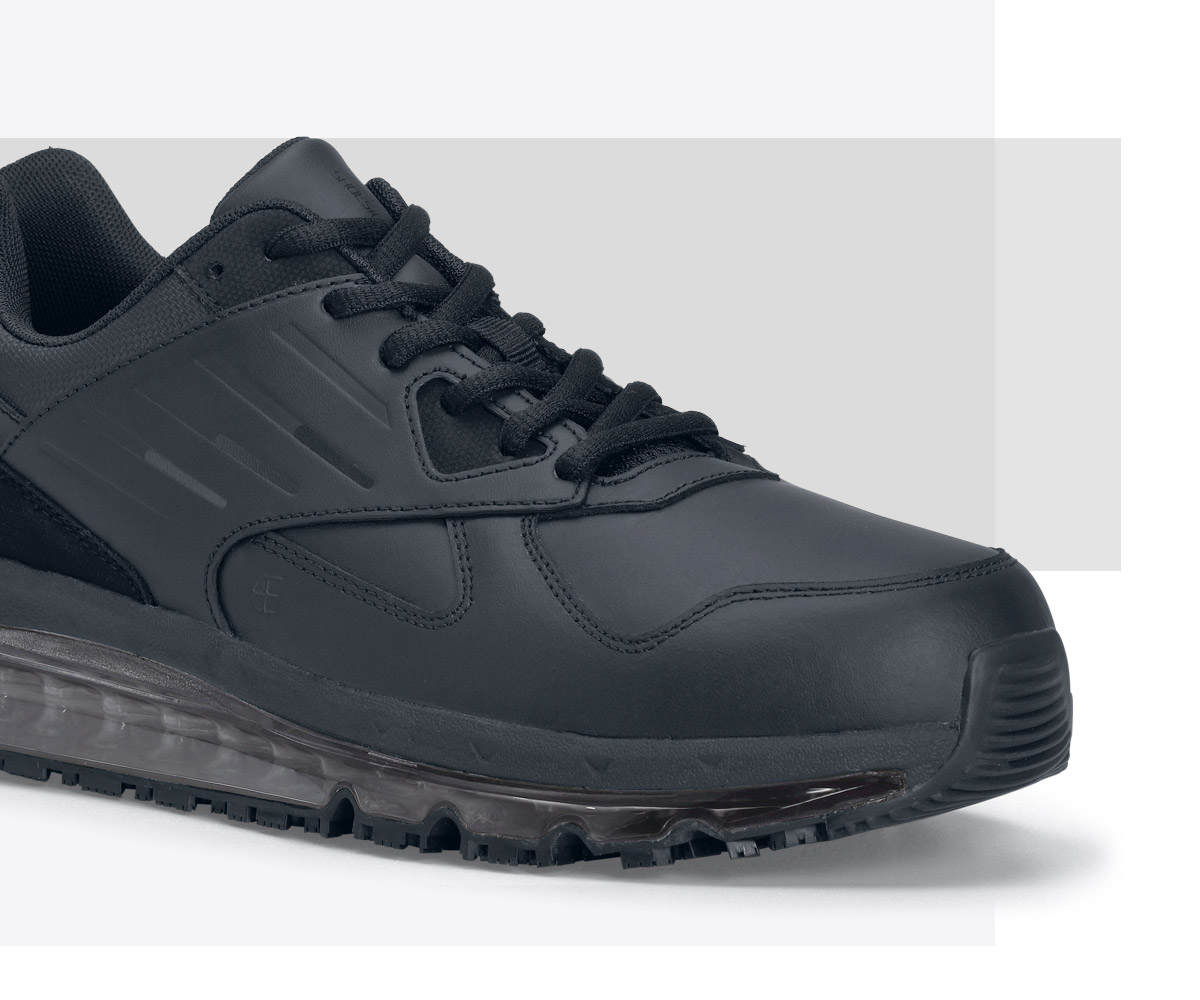Slippery Situations: The Dangers of Slipping and Falling
Slipping and falling is a serious concern in many workplaces and environments. According to the National Safety Council, falls are the third leading cause of unintentional injury deaths in the United States, resulting in over 32,000 fatalities in 2020 alone. In addition to the risk of fatalities, slips and falls can also lead to injuries, disabilities, and even long-term health problems. The consequences of slipping and falling can be severe, with victims often requiring extensive medical treatment, rehabilitation, and time off work.
In hazardous environments, such as construction sites, manufacturing facilities, and healthcare settings, the risk of slipping and falling is even higher. Oil spills, wet floors, and uneven surfaces can all contribute to slippery conditions, making it essential for workers to wear slip resistant and oil resistant shoes. In fact, the Occupational Safety and Health Administration (OSHA) recommends that employers provide slip resistant and oil resistant shoes as part of their personal protective equipment (PPE) protocols.
By wearing slip resistant and oil resistant shoes, workers can significantly reduce the risk of slipping and falling. These shoes provide better traction and stability, helping to prevent accidents and injuries. Moreover, many slip resistant and oil resistant shoes are designed to meet specific industry standards, ensuring that they can withstand the demands of hazardous environments.
Oil Slicks and Slippery Floors: The Need for Oil-Resistant Shoes
Working in environments with oil or chemical spills can be hazardous, and the risk of slipping and falling is ever-present. Oil slicks and slippery floors can be found in various industries, including manufacturing, construction, and food processing, where the presence of oil, grease, or chemicals is common. In these environments, the importance of wearing oil-resistant shoes cannot be overstated.
Oil-resistant shoes provide an extra layer of protection against slipping and falling, which can have devastating consequences. By wearing shoes with oil-resistant materials and treatments, workers can reduce the risk of accidents and injuries. Moreover, oil-resistant shoes can also prevent oil penetration, which can damage the shoe and compromise its integrity.
In industries where oil or chemical spills are common, oil-resistant shoes are not just a recommendation, but a necessity. For example, in manufacturing facilities, oil-resistant shoes can protect workers from slipping on oil spills or chemical leaks. In construction sites, oil-resistant shoes can prevent accidents caused by slippery floors or oil spills. In food processing plants, oil-resistant shoes can ensure that workers do not slip on greasy floors, which can lead to accidents and contamination.
When working in hazardous environments, it is essential to wear shoes that can withstand the demands of the job. Oil-resistant shoes are designed to provide traction and stability, even in the most challenging conditions. By choosing the right oil-resistant shoes, workers can protect themselves from the risks of slipping and falling, and employers can reduce the risk of accidents and injuries in the workplace.
How to Select the Best Slip-Resistant and Oil-Resistant Shoes
Selecting the right slip resistant and oil resistant shoes can be a daunting task, especially with the numerous options available in the market. However, by considering certain factors, you can make an informed decision and choose the best shoes for your needs.
One of the most critical factors to consider is the sole material. Look for shoes with soles made from high-quality rubber compounds that provide excellent traction and grip. The tread pattern is also essential, as it can affect the shoe’s ability to grip slippery surfaces. A good tread pattern should have deep grooves and a unique design that allows for maximum traction.
Certification standards are another crucial factor to consider. Look for shoes that meet or exceed industry standards, such as those set by the American Society for Testing and Materials (ASTM) or the International Organization for Standardization (ISO). These standards ensure that the shoes have undergone rigorous testing and meet specific requirements for slip resistance and oil resistance.
In addition to these factors, consider the specific hazards you will be exposed to in your workplace. If you work in an environment with oil or chemical spills, look for shoes with oil-resistant materials and treatments. If you work in a slippery environment, such as a kitchen or bathroom, look for shoes with excellent slip-resistant properties.
Finally, consider the comfort and durability of the shoes. Slip resistant and oil resistant shoes should be comfortable to wear for extended periods and durable enough to withstand the demands of your job.
By considering these factors, you can select the best slip resistant and oil resistant shoes for your needs and ensure a safe and healthy work environment.
Top Picks: Dr. Martens and Timberland Slip-Resistant Shoes
When it comes to slip resistant and oil resistant shoes, two brands stand out for their quality and performance: Dr. Martens and Timberland. Both brands offer a range of slip-resistant and oil-resistant shoe models that cater to different industries and work environments.
Dr. Martens is a popular choice among workers in the manufacturing and construction industries. Their Icon Slip Resistant Shoe features a rugged outsole with deep grooves and a unique tread pattern that provides excellent traction on slippery surfaces. The shoe also has a breathable membrane that prevents oil penetration and slipping. With a 4.5-star rating and over 1,000 customer reviews, this shoe is a top pick among workers who need reliable slip-resistant footwear.
Timberland is another brand that offers high-quality slip resistant and oil resistant shoes. Their PRO Boondock Slip Resistant Shoe is a favorite among workers in the food processing and healthcare industries. The shoe features a rugged outsole with a unique tread pattern that provides excellent traction on slippery floors. The shoe also has a breathable membrane and a comfortable design that makes it ideal for workers who are on their feet all day. With a 4.5-star rating and over 500 customer reviews, this shoe is a top pick among workers who need reliable slip-resistant footwear.
Both Dr. Martens and Timberland offer a range of slip-resistant and oil-resistant shoe models that cater to different industries and work environments. By choosing a shoe from one of these brands, workers can ensure that they have the right footwear to protect themselves from slipping and falling hazards.
In addition to their quality and performance, Dr. Martens and Timberland slip resistant and oil resistant shoes are also known for their durability and comfort. Many workers who wear these shoes report that they are comfortable to wear for extended periods and can withstand the demands of their job.
Overall, Dr. Martens and Timberland are two brands that offer high-quality slip resistant and oil resistant shoes that can provide workers with the protection they need to stay safe on the job.
Slip-Resistant Technology: Understanding the Science Behind the Soles
When it comes to slip resistant and oil resistant shoes, the technology and materials used in the soles play a critical role in providing traction and stability. Understanding how these features work together can help workers make informed decisions when selecting the right footwear for their job.
The sole material is a crucial factor in slip resistant and oil resistant shoes. High-quality rubber compounds are often used in slip-resistant shoes because of their excellent grip and traction properties. These compounds are designed to provide maximum friction on slippery surfaces, reducing the risk of slipping and falling.
The tread pattern is another important feature of slip resistant and oil resistant shoes. A good tread pattern should have deep grooves and a unique design that allows for maximum traction on slippery surfaces. The tread pattern should also be self-cleaning, meaning it can easily remove debris and liquids that can affect traction.
Testing methods are also crucial in ensuring that slip resistant and oil resistant shoes meet industry standards. The American Society for Testing and Materials (ASTM) and the International Organization for Standardization (ISO) are two organizations that set standards for slip-resistant footwear. Shoes that meet or exceed these standards have undergone rigorous testing and have been proven to provide excellent traction and stability.
In addition to these features, some slip resistant and oil resistant shoes also have advanced technologies that enhance their performance. For example, some shoes have micro-channeling technology that allows for better water dispersion and traction on slippery surfaces. Others have specialized tread patterns that are designed for specific industries, such as food processing or construction.
By understanding the technology and materials used in slip resistant and oil resistant shoes, workers can make informed decisions when selecting the right footwear for their job. By choosing shoes with high-quality sole materials, advanced tread patterns, and rigorous testing, workers can reduce the risk of slipping and falling and stay safe on the job.
Oil-Resistant Materials: What Makes Them Effective
When it comes to slip resistant and oil resistant shoes, the materials and treatments used in the shoes play a critical role in preventing oil penetration and slipping. Understanding how these features work together can help workers make informed decisions when selecting the right footwear for their job.
Chemical-resistant coatings are a common feature of oil resistant shoes. These coatings are designed to prevent oil and chemicals from penetrating the shoe and causing slipping. They are often applied to the sole and upper materials of the shoe to provide maximum protection.
Membranes are another important feature of oil resistant shoes. These membranes are designed to allow moisture to escape while preventing oil and chemicals from entering the shoe. This helps to keep the foot dry and comfortable while preventing slipping.
Breathable materials are also used in oil resistant shoes to prevent oil penetration and slipping. These materials allow air to circulate around the foot, preventing the buildup of moisture and oil that can cause slipping.
In addition to these features, some slip resistant and oil resistant shoes also have advanced treatments that enhance their performance. For example, some shoes have nanotechnology-based treatments that provide superior oil resistance and traction. Others have specialized membranes that are designed for specific industries, such as food processing or construction.
By understanding the materials and treatments used in oil resistant shoes, workers can make informed decisions when selecting the right footwear for their job. By choosing shoes with chemical-resistant coatings, membranes, and breathable materials, workers can reduce the risk of slipping and falling and stay safe on the job.
It’s also important to note that slip resistant and oil resistant shoes are not a one-size-fits-all solution. Different industries and work environments require different types of oil-resistant shoes. For example, workers in the food processing industry may require shoes with specialized membranes that can withstand frequent cleaning and sanitizing. Workers in the construction industry may require shoes with advanced tread patterns that can provide traction on rough terrain.
By understanding the specific needs of their job and selecting the right slip resistant and oil resistant shoes, workers can stay safe and healthy on the job.
Industry Insights: Slip-Resistant and Oil-Resistant Shoes in the Workplace
In various industries, slip resistant and oil resistant shoes are not just a recommendation, but a necessity. Workers in manufacturing, construction, and healthcare, among others, face hazardous environments on a daily basis, and the right footwear can make all the difference between safety and disaster.
In manufacturing, for example, workers are often exposed to oil and chemical spills, which can lead to slips and falls. By wearing slip resistant and oil resistant shoes, workers can reduce the risk of accidents and injuries, and ensure a safe and productive work environment.
In construction, workers face rough terrain, uneven surfaces, and inclement weather conditions, which can make it difficult to maintain traction. Slip resistant and oil resistant shoes with advanced tread patterns and rubber compounds can provide the necessary grip and stability to prevent slips and falls.
In healthcare, workers are often exposed to slippery floors, oil spills, and other hazardous substances. By wearing slip resistant and oil resistant shoes, healthcare workers can reduce the risk of accidents and injuries, and ensure a safe and healthy work environment.
Many companies have recognized the importance of slip resistant and oil resistant shoes in the workplace and have implemented policies requiring workers to wear them. For example, a manufacturing company in the Midwest implemented a slip-resistant shoe policy, which resulted in a 75% reduction in slips and falls over a period of six months.
Another example is a construction company in California, which required its workers to wear slip resistant and oil resistant shoes on all job sites. As a result, the company saw a significant reduction in workplace accidents and injuries, and was able to reduce its workers’ compensation claims by 50%.
These examples demonstrate the importance of slip resistant and oil resistant shoes in various industries. By prioritizing safety and wearing the right footwear, workers can reduce the risk of accidents and injuries, and ensure a safe and healthy work environment.
Conclusion: Step Up Your Safety with the Right Footwear
In conclusion, slip resistant and oil resistant shoes are a crucial component of workplace safety in hazardous environments. By understanding the risks and consequences of slipping and falling, and the importance of wearing the right footwear, workers can take a proactive approach to preventing accidents and injuries.
Whether you work in manufacturing, construction, healthcare, or another industry, slip resistant and oil resistant shoes can provide an extra layer of protection against slips, falls, and oil spills. By selecting the right shoes for your job, you can reduce the risk of accidents and injuries, and ensure a safe and healthy work environment.
Remember, safety is everyone’s responsibility, and wearing slip resistant and oil resistant shoes is a critical step in prioritizing your safety. Don’t wait until it’s too late – step up your safety game today by choosing the right footwear for your job.
By following the tips and guidelines outlined in this article, you can make an informed decision when selecting slip resistant and oil resistant shoes. Whether you’re looking for shoes with advanced tread patterns, chemical-resistant coatings, or breathable materials, there’s a shoe out there that’s right for you.
So, take the first step towards a safer workplace today. Choose slip resistant and oil resistant shoes that meet your needs, and prioritize your safety above all else. Your safety is worth it.







